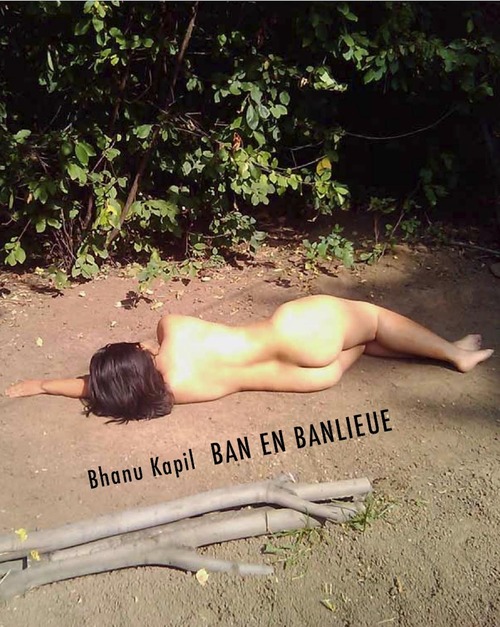
In honor of the publication of Bhanu Kapil’s newest book Ban en Banlieue, just published by Nightboat Books, the writers Amina Cain, Douglas A. Martin, Sofia Samatar, Kate Zambreno, and Jenny Zhang gathered together in a conversation to talk about the work of the British-Punjabi writer, who teaches in the Department of Writing and Poetics at Naropa University. The conversation will be published in three parts.
Day 3: Collectively reading Bhanu Kapil’s Ban en Banlieue
SOFIA SAMATAR: “A girl lies down on the sidewalk.” The repetition of this: Ban killed in a riot, Bhanu lying down at an anti-rape protest in Delhi, and then the woman who leaps into the water during suttee, who lies down there. While I’m reading Ban, the socialist activist Shaimaa al-Sabbagh is shot and killed during a peaceful demonstration in Cairo; two days earlier, Sondos Reda Abu Bakr, a seventeen-year-old student, was killed in a demonstration in Alexandria. Two women on the sidewalk. “It is so excruciating to write about these subjects that I take years, months: to write them.” For me Ban is about women in demonstrations, in public, in politics. “The role of sacrifice, patriarchy, fire-water mixtures,” Bhanu says. And she says: “Write what never ends.”
KATE ZAMBRENO: It feels almost impossible to express the psychic energy in this book, the grief and wit and rage. In it the narrator circles around the story of a woman remembering a race riot in London in the 70s, while tracing, in a visceral way, through notes on performances, blog entries, notebooks, various errata, other bodies deemed as disposable, primarily Nirbhaya, “The Fearless One,” the young woman gang raped and beaten to death on a bus in New Delhi in 2012.
On the first page Bhanu holds a ceremony with Theresa Hak Kyung Cha’s Dictee, and that text is the only one that comes close to me with what Bhanu performs here. Her own Joan of Arcs (like Nibrhaya, like the photograph at the beginning of Blair Peach, the antiracist activist killed by police in a 1979 London demonstration).
JENNY ZHANG: The excruciation of writing about these distortions and mutilations and traumas and displacements creates a safe space where goals don’t really matter, where having a product at the end of production doesn’t really matter. I kind of lost my shit when I saw Missy Elliott sing and dance at the Superbowl for two minutes yesterday. I felt the temporary pleasure of being connected to pop culture. After her performance, her single “Get Ur Freak On” became the most downloaded song in iTunes or something like that. Everyone wanted this...
You have reached your article limit
Sign up for a digital subscription and continue reading all new issues, plus our entire archives, for just $1.50/month.
Already a subscriber? Sign in




